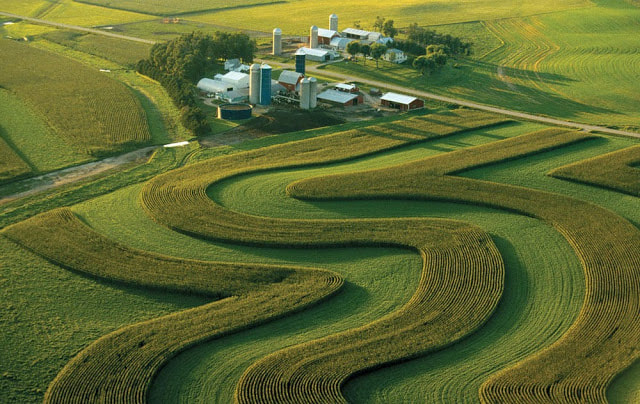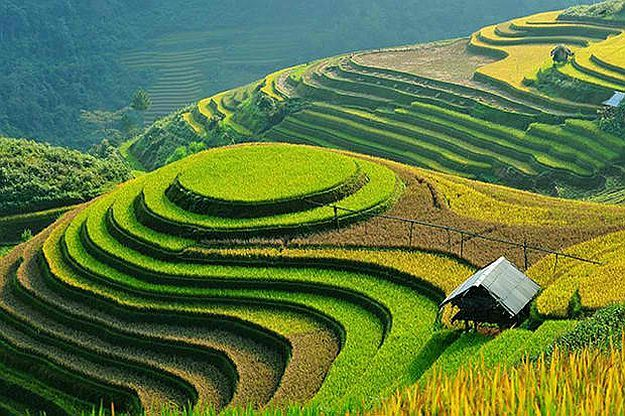APES CH3 - Princeton Review
1/72
There's no tags or description
Looks like no tags are added yet.
Name | Mastery | Learn | Test | Matching | Spaced |
|---|
No study sessions yet.
73 Terms
Conservation
The management/regulation of a resource so that its use does not exceed the capacity of the resource to regenerate itself
Preservation
The maintenance of a species or ecosystem in order to ensure their perpetuation, without concert to their monetary value
Agricultural urbanization
New pesticides/fertilizers, expanded irrigation, and new high-yield seed types
Subsistence agriculture
Producing food for a family's survival
Surplus is sold for income
Uses animal/human labor
In developing countries
Slash and burn
An area of vegetation is cut down and burned before being planted with crops
Resulting ash makes the soil fertile for a short period of time
Farmer must soon leave and repeat the process elsewhere
Fertilizer cons
Reduction of organic matter/oxygen in soil
It requires lots of energy
Dangerous pollutants —> eutrophication
Pesticide treatmill
A positive feedback loop: pesticides are developed, then pests become resistant to that pesticide, so a new pesticide is developed
Federal Insecticide, Fungicide, and Rodenticide Act (FIFRA)
All pesticides must be approved by the EPA
Salinization
Buildups of salt on the soil’s surface, making it unusable to grow crops
Drawback of irrigation
Desertification
Salinization
Waterlogging
Depletion of aquifers
Types of irrigation
Drip = a slowly dripping hose laid on the ground or buried beneath the soil
Reduces weed growth due to dry surface soil; useful for perennial crops where the hoses do no have to be moved for plowing
95% efficient
Furrow, flood, spray, and drip
Furrow irrigation
Trenches along crop rows that are filled w/ water
Minecraft village crops
Easy & expensive - 65% efficient
Flood irrigation
Flooding a field with water
Leads to waterlogging
Can be disruptive to plant growth - 80% efficient
Spray irrigation
Pumping ground water into spray nozzles across an agricultural field
Less evaporation and runoff than flood/furrow
Expensive & energy consuming - 75% efficient
Drip irrigation
Using perforated hoses to release small amounts of water to plant roots
Reduces weed growth due to dry surface soil
Expensive - but 5% efficient
Integrated Pest Management (IPM)
A combination of methods used to effectively control pest species while minimizing the disruption to the environment & using pesticides as a last resort
Examples of IPM
Introducing pest predators
Intercropping / crop rotation
Releasing pheromones/hormones
Using traps/barriers
Mulch to prevent weed growth
Drawbacks of IPM
Expensive & time-consuming
Positive example of GMOS
Golden rice, providing vitamin A and iron
Drawbacks of GMOS
Discourage biodiversity
Allergy risks
Antibiotic resistance
New pesticide-resistant pests
Contamination
Mutations: GMOs breeding with natural organisms
Photosynthate
Photosynthetic products
Contour-farming
Plowing & harvesting are parallel to the topographic contours of the land
Prevents erosion

Terracing
Flat platforms cut into the hillside to make a level planting surface
Prevents erosion

No-till methods
Farmers do not turn the soil
Drawbacks of tilling
Release CO2 (lost carbon content)
Removes all plant root —> erosion
Exposes organic matter to oxygen —> oxidation
Crop rotation
Switching the type of crop being grown in a certain area
Can replenish soil
Biodiversity
Reduced erosion
Intercropping/strip cropping
Growing two or more crops in close proximity
Less soil erosion
Shady topsoil (prevents weeds)
Biodiversity
Nutrients
Prevent pests
Deforestation is highest in…
Developing countries
Clear-cutting drawbacks
Erosion
Soil runoff
Loss of shade
Deforestation drawbacks
Loss in biodiversity
Erosion
Depletion of nutrients in soil
Climate change
Flooding
Old growth forest
A forest that has never been cut or seriously disturbed in a LONG time
Lots of biodiversity & niches
Second growth forests
Forests where cutting has occured and a new, younger forest has arisen naturally
95% of the world’s forests
Plantations/tree farms
Planted and managed tracts of trees that are harvested for commercial use
Silviculture
The management of forest plantations for the purpose of harvesting timber
Selective cutting
Removing single trees or a relatively small number of trees from the larger forest
Allows space for new trees
Allows space to prevent diseases spreading
Keeps most of the trees there so they can grow
Uneven-aged management
A forest in which trees originate at different times and result in a forest with trees of all ages and sizes
Shelter-wood cutting
Mature trees are cut over a period of time, leaving some mature trees in place to reseed the place
National Park System (1916)
Created to manage and preserve forests and grasslands
Wilderness Act (1964)
Land open only for recreational activities with no logging permitted
Wild and Scenic Rivers Act (1968)
Provided for the protection of rivers with important scenic, recreational, fish and wildlife, and other values
Classified rivers as wild, scenic, or recreational
Greenbelts
Open areas built at the outer edge of a city used for recreation, sustainable forestry, or other nondestructive uses
Border cities —> growth limits
Ways to prevent diseases/pests in trees
Removing infected trees
Plant trees with space b/t each other
Using chemicals/natural pest controls
Carefully inspecting trees
GMOs: creating pest/disease-resistant trees
Types of forest fires
Surface, crown, ground
Surface fires
Burn the forests’ underbush
Do little damage to mature trees
Protect the forest by preventing a buildup of underbrush and dead materials
Crown fires
May start on the ground or canopies of forests that haven’t experienced recent surface fires
Spread quickly w/ high temperatures
Consume underbrush and dead materials on the forest floor
Huge threat
Found fires
Bogs or swamps
Last for days or weeks
Originate from surface fires
Difficult to detect and extinguish
“Smokey the Bear” drawbacks
Created conditions for more destructive fires
Fewer fires = more fuels built up = larger fires
Controlled burns
Small fires started when the conditions are just right
Lower the amounts of fuel
12-mile limit
An old limit on fishing, limiting each nation’s territorial waters to 12 miles form shore
Changed to 200
Capture fisheries
Captures fish in the wild that are not grown in captivity
Long-line
A very long line with hooks of bait attached
Drift net/gill net
A super long net that swoops up everything in its path
Purse seine
Huge purse-like net with 2 draw-string at the net that can capture entire schools of fishing
Trawling
A net that drags along the bottom of the ocean sea
Destroys all ecosystems in the seafloor (benthic zone)
Ways to improve fishing methods
Ribbons on long-lines to scare away birds & other by-catch
Catch limits based on maximum sustainable yield
US Endangered Species Act
Laws & fines & treaties
Convention on International Trade in Endangered Species Species of Wild Flora and Fauna (CITES)
Turtle Excluder Device (TED)
Consumer pressure
Aquaculture/fish farming
Raising/hatching fish in captivity
Downsides of aquaculture
Threat of escape: invasive species, breeding with native species
Waste contamination —> eutrophication
Disease
Uneaten food pellets
CAFO
Hypoxic
Low levels of oxygen
International Whaling Commission (1974)
Regulates whaling
For Norway —> human consumption
For Japan —> scientific use
Coral bleaching
When ocean temperatures rise and the photosynthetic algae (zooxanthellae) inside the coral reef dies
Acidic
More H+ ions; lower pH
Basic
More OH- ions; higher pH
Ocean acidification
H2O + CO2 —> H2CO3
H2CO3 —> HCO3 + H-
HCO3 —> H + CO3-
What coral need to survive
Calcium carbonate (CaCO3)
Ca+2+ CO3-2 —> CaCO3
How ocean acidification impacts coral
Excess hydrogen takes the carbonate so the carbonate can’t bond with calcium
Mangrove swamp threat
Shrimp aquaculture and the degradition of the Western coastline
Mangroves
Found in tropical/subtropical regions
Brackish tidal waters
Often located in estuaries (where freshwater meets salt water)
Very biodiverse
Prevent shoreline erosion
Anadromous Fish Conservation Act (1965)
Protected fish that live in the sea but grow up and breed in fresh water
Magnuson Fishery Conservation and Management Act (1967)
Governed the conservation and management of ocean fishing
Marine Mammal Protection Act (1972)
Established a federal responsibility to conserve marine mammals
Endangered Species Act (1973)
Provided broad protection for species of fish, wildlife, and plants that are listed or endangered in the US or elsewhere
The United Nations Agreement for the Implementation of the Provision of the United Nations Convention on the Law of the Sea (1982) AKA Law Of the Sea Convention (LOSC)
Set out the principle for the conservation and management of certain types of fish
CITES (the Convention on International Trade in Endangered Species of Wild Fauna and Flora)
An international agreement b/t governments that ensured that international trade in specimens of wild animals and plants to not threaten their survival